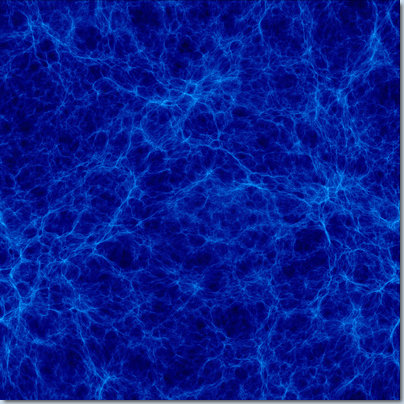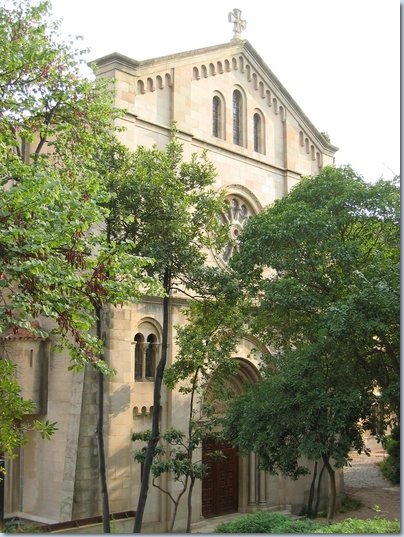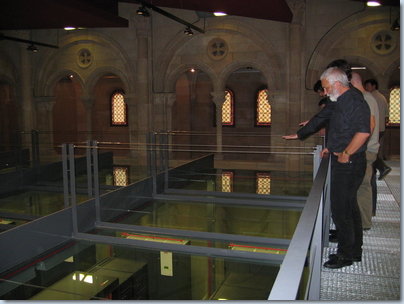|
MareNostrum, the most powerful supercomputer in Europe stands in a former church in Barcelona. Its computational capacity has just been doubled. With 10,240 processors and a computational capacity of 94.21 teraflops it is able to conduct 94.21 trillion operations per second. Thus it is not only the most powerful supercomputer in Europe but also the fifth most powerful in the world. Within the scope of several European projects, scientists of the
Astrophysical Institute Potsdam (AIP) were granted computational time on MareNostrum for the study of complex problems of galaxy formation, the simulation of which would require hundreds of years on normal computers.
Scientific Scientific progress in research in some areas is only made possible through the close collaboration between a theoretical basis, experiments and computer simulations. Sufficient computational capacity is the key for the scientific and technological development of a country. Scientists from many countries and many areas of research are thus interested
in computational time on the Spanish supercomputer MareNostrum. Inquiries for the use of computational time exceed MareNostrum's available capacity by a factor of three. Thus scientists have to apply to an access comittee of independent Spanish scientists. The computer is used by research projects from areas such as earth sciences, biomedicine, chemistry, material sciences, physics, engineering sciences and astrophysics. In cooperation with the Autonomous University of Madrid (UAM) the Astrophysical Institute Potsdam (AIP) is conducting two simulations on MareNostrum to understand the formation of galaxies in the early universe. The simulations are huge and very complex and are thus only possible on such
supercomputers. At the moment, for example, the formation of a thousand galaxies is being simulated in a cube measuring 233.2 million light years on each side. So far this project has used over a million computational hours on MareNostrum. On a normal computer with one processor, this calculation would have taken more than 114 years, uninterrupted, but on MareNostrum it took only 52 days because 800 processors could be used at the same time for the calculations. After the doubling of the computational capacity, the project was granted a further 600,000 hours.
Project manager Prof. Gustavo Yepes hopes to advance to a redshift of 5 and thus to be able to see the formation of galaxies in the first billion years after the Big Bang.

High-resolution galaxy simulation which shows a spacious gas distribution over one billion years after the big bang. In those knots of the filaments proto-galaxies form. [Image: Arman Khalatyan, AIP]
[Press release]
[Cosmology group]
[AIP home page]
|
|

MareNostrum in the former chapel on the campus of the Polytechnical University of Barcelona (in the Barcelona Supercomputing Center). The name our sea is the Roman name for the Mediterranean and symbolizes the central role of the system for science. [Photo: S. Gottlöber, AIP]

MareNostrum, the most powerful Supercomputer of Europe and the fifth most powerful of the world [Photo: S. Gottlöber, AIP]
|
A second simulation project involving the AIP, within the scope of the European DEISA Extreme Computing Initiative, is just being prepared. In cooperation with Prof. Yehuda Hoffman (Jerusalem) who did his research on a Mercator-Professorship at the University of Potsdam at the AIP this summer, and Prof. Anatoly Klypin, who managed the Helmholtz Institute at the AIP this summer, Dr. Stefan Gottloeber from the AIP plans to simulate the local universe. This means that similar objects to those we observe in our local environment are being generated in the computer. Of course, by `local' environment, we mean several million light years! So far 700,000 computer hours (the equivalent of 80 years on a single computer) were granted for this project.
Press contact
Ms Shehan Bonatz
Astrophysikalisches Institut Potsdam
An der Sternwarte 16
D-14482 Potsdam
(0331) 7499 469

Scientific contact
Dr. Stefan Gottlöber
(0331) 7499 516

|


 last change 2006 November 29, R. Arlt
last change 2006 November 29, R. Arlt


